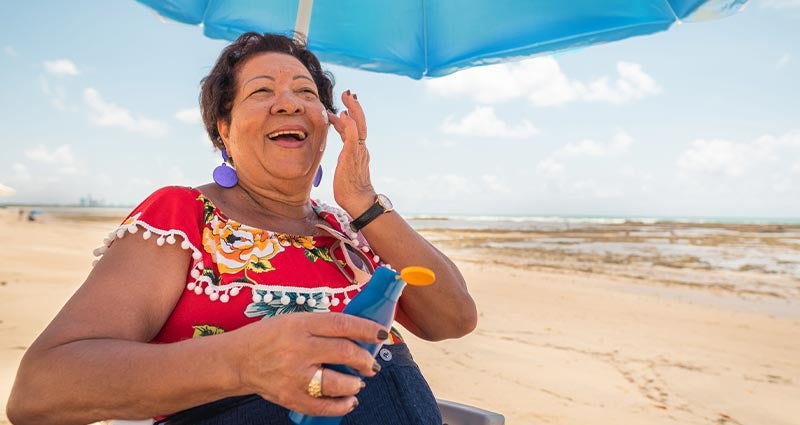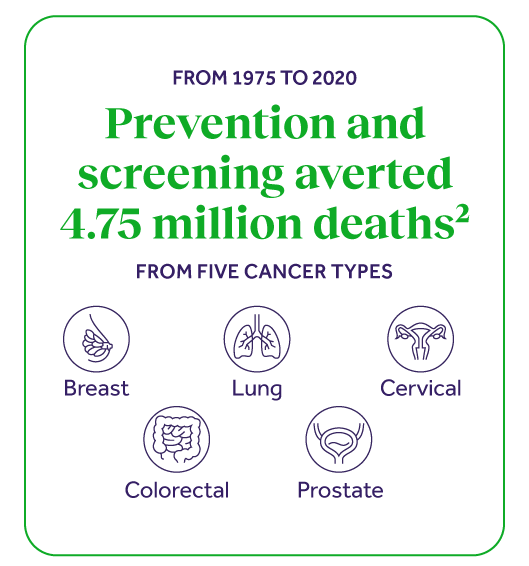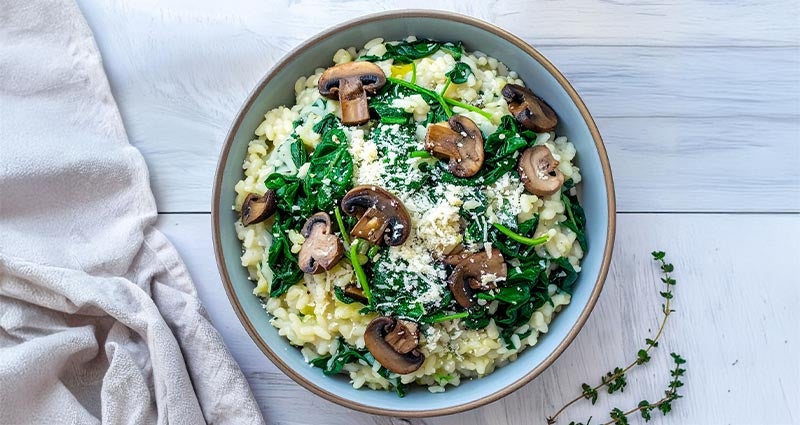Control the controllable: cancer screenings and prevention

Cancer is the second-leading cause of adult deaths in the United States.1 It would be hard to find a person or family that hasn’t been affected by this disease.
While this fact may seem scary, it’s not all bad news. Making certain lifestyle choices can help lower cancer risk.3 These actions, along with regular screenings, could reduce your chances of being diagnosed with cancer. And if you are, early detection could improve your chances of survival.

The most common cancers (in descending order) are breast, prostate, lung, colorectal and skin cancers.1 Interestingly, these, like many types of cancers, have risk factors that can be controlled.3
Awareness counts
Being aware of how you feel when you’re healthy is important. Regular self-exams of skin, breasts and testicles allow you to understand what your “normal” baseline is. Listen to your body when things look or feel different. Noticing new aches and pains or feeling something being “not right” is easier when you’re in tune with it.
Participating in regular screenings is an incredible tool to use to understand and may even help reduce your cancer risk. And, if you follow guidelines and are ultimately diagnosed with cancer, early detection could make all the difference in your prognosis.
People of average cancer risk should consider the following: 4
- Breast cancer: Screening imaging (mammography, ultrasound, MRI, etc.) is recommended every two years from 40 through 74.
- Colorectal cancers: Based on individual risk factors, regular screening should start between the ages of 45 and 49, either with a stool-based test or by a direct visualization approach (colonoscopy, sigmoidoscopy, CT colonography) and continue until age 75. Your doctor will help you find the best fit.
- Cervical cancer: Screening should start at age 21. This should also include hrHPV (high-risk human papillomavirus) testing done every five years. These should continue until age 65.
- Lung cancer: A low-dose CT (LDCT) scan for people ages 50 to 80 is recommended annually for those who currently smoke or have quit within the past 15 years.
- Prostate cancer: Between the ages of 55 and 69, talk to your healthcare provider about prostate cancer screening options and individual risk factors.
Preventive things you can do3, 5

Eat healthy foods
Some foods play a role in preventing cancer. Adopting a healthy eating pattern can reduce the overall risk of some cancers by 10%-20%.6
The best options to help prevent cancer are:
- Prioritizing fiber-rich foods like whole grains, beans and lentils
- Consuming fresh fruits and veggies
- Limiting processed foods
- Avoiding sweetened beverages
This is a lot of information to incorporate into your health planning. However, eating simple, clean meals made with whole foods is one step in the right direction.

Spinach and mushroom risotto
This healthy recipe combines fresh vegetables and herbs.7 Made without butter or cream, it still tastes rich but has very little fat. For a decadent touch, drizzle individual portions with truffle oil or extra-virgin olive oil before serving.
Makes: 4 servings | Prep: 10 mins | Cook: 35 mins
Ingredients
- 4 cups reduced-sodium, low-fat chicken broth (or vegetable broth)
- 2 Tbsps extra-virgin olive oil, divided
- ½ onion, finely chopped
- 1 garlic clove, minced
- 1 cup arborio or carnaroli “risotto” rice, rinsed and drained
- ½ cup dry white wine (such as sauvignon blanc or pinot grigio)
- 12 oz assorted mushrooms (such as shiitake, cremini and button), sliced
- 3 cups fresh baby spinach, coarsely chopped
- 1 tsp fresh thyme leaves
- ¼ cup freshly grated Parmesan cheese
- Salt and freshly ground black pepper
- Truffle oil, optional
Preparation
- In a saucepan, bring the broth to a simmer. Cover and keep warm over low heat.
- In a large stockpot over medium heat, add 1 Tbsp of the olive oil. Sauté the onion for 2 to 3 minutes. Add the garlic and sauté for 1 minute. Add the rice and sauté for 1 minute. Add the wine and stir until it is almost completely absorbed.
- Begin slowly adding the broth, ½ cup at a time, stirring frequently. Wait until the liquid is almost completely absorbed before adding more, 2 to 4 minutes. Continue to add the broth, stirring frequently, for 20 to 30 minutes, or until the risotto has a creamy texture but is still al dente (just firm). You may not need to use all of the broth.
- Meanwhile, in a skillet over medium-high heat, add the remaining 1 Tbsp of oil. Sauté the sliced mushrooms for 3 to 5 minutes, or until they have softened and released their liquid.
- When the risotto is ready, stir in the spinach until wilted. Add the mushrooms, thyme and cheese and stir to combine. Season with salt and pepper and serve immediately. Drizzle individual servings with a small amount of truffle oil or olive oil if desired.
Nutrition
Serving size: 1.5 cups
Calories: 320 | total fat: 12 g | saturated fat: 3 g | sodium: 450 mg | cholesterol: 10 mg | total carbs: 40 g | fiber: 3 g | sugars: 2 g | protein: 10 g | potassium: 500 mg
1https://seer.cancer.gov/statfacts/html/common.html
2https://www.cancer.gov/news-events/press-releases/2024/cancer-deaths-averted-prevention-screening-contribution
3https://www.cancer.org/cancer/risk-prevention.html
4https://www.uspreventiveservicestaskforce.org/uspstf/recommendation-topics/uspstf-a-and-b-recommendations
5https://nutritionsource.hsph.harvard.edu/cancer/preventing-cancer/
6https://www.mdanderson.org/cancerwise/36-foods-that-can-help-lower-your-cancer-risk.h00-159774078.html
7https://www.cancer.org/cancer/risk-prevention/diet-physical-activity/eat-healthy/find-healthy-recipes/main-dishes/spinach-and-mushroom-risotto.html
Was this article helpful?
Don't wait! Unlock a healthy, happy new year, at no cost to you.
This content is not intended to be a substitute for professional medical advice, diagnosis or treatment. Always seek the advice of your physician or other qualified health provider with any questions you may have regarding a medical condition.
